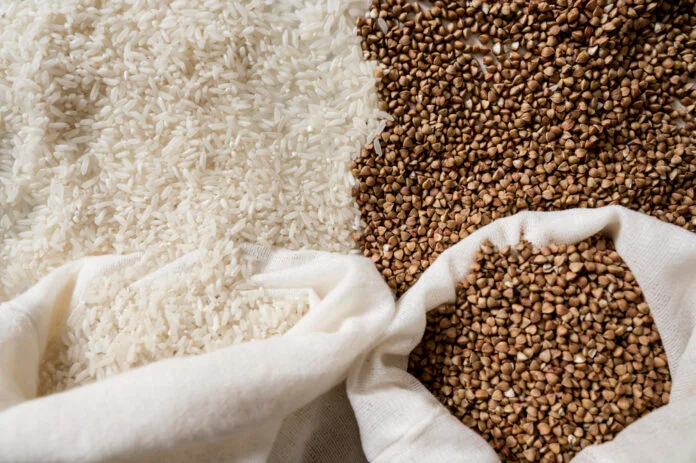The Green Revolution in the Kitchen: The Advantages of Choosing Organic Sesame Seeds
Amidst the bustling food industry, the trend of sustainability has found its footing and is growing rapidly. The profound relationship between chefs and farmers has given rise to an era where local farms, fresh ingredients, and innovative dishes have become the norm. In this scenario, one such organic ingredient that has gained considerable attention is the humble sesame seed.
This article delves into the world of organic sesame seeds, their origins, how to identify quality seeds, their sustainability, nutritional value, and some interesting recipes you can try at home.
1. Organic Sesame Seeds: A Way of Life
In certain parts of the world, especially in Oaxaca, Mexico, organic sesame seeds are more than just a culinary garnish; they are a way of life. Consumed daily, these seeds provide an array of health benefits and are an integral part of their traditional dishes.
Rosendo Matniel Perez, the technical head for organic growing for Comunidades Campesinas en Camino, a cooperative organization known for selling organic rice and sesame oil under the brand name Ecotierra, begins his day with a tablespoon of sesame seeds. This practice is not just confined to him but extends to his entire family and community, demonstrating the significant role that sesame seeds play in their daily lives.
2. Unraveling the Origins of Sesame Seeds
Sesame seeds have a rich history, with their origins being a topic of intense debate among biologists. Some argue that the plant was first found in Southeast Africa, while others believe it originated in the Indian subcontinent.
Historically, it’s agreed that the cultivation of sesame seeds dates back to at least 5,000 years ago in the Harappa Valley (now Pakistan and India). The cultivation of these oil- and protein-rich seeds then spread across Asia and Europe, and they eventually thrived in sub-Saharan Africa, where they became a staple food.
3. Identifying Quality Sesame Seeds
When purchasing sesame seeds, it’s important to note that they come in various colors such as beige, off-white, black, red, and dark brown.
In the US, the seed coats are usually removed (hulled) and used to top burger buns and other pastries.
Sesame oil, another popular product derived from these seeds, can be made from raw or roasted seeds. The oil from raw seeds can be cold-pressed, expeller-pressed, or hand-pressed in some small-scale operations. The resulting oil is quite mild in flavor and yellow to golden in color. On the other hand, toasted sesame oil, made from roasted sesame seeds, is strong in taste and brown in color.
4. Sustainability of Sesame Seeds
According to the UN’s Food and Agriculture Organization (FAO), in 2014, the top global producers of sesame seeds were Myanmar, India, China, Sudan, and Tanzania. The seeds are also grown in Mexico and Central America.
Notably, a significant portion of globally traded sesame comes from these countries, where the crop is commonly grown by smallholder farmers who depend on the success of their crops and the global demand for the seeds.
There are concerns around water use in seed processing, especially if seeds are mechanically de-hulled, which requires a large amount of water. Therefore, choosing un-hulled seeds is a more sustainable option.
5. Pesticides and Sesame
Sesame is known for its tolerance to drought and poor soil. However, in the US, it’s often intercropped with cotton, a largely genetically modified (GM) crop. This is concerning because the herbicides used on GM cotton fields often end up in the soil and local waterways.
On a positive note, small producers like Anson Mills are working with local farmers to produce sustainably farmed sesame, and organically-grown sesame is also available for those concerned about these issues.
6. Storing Fresh Sesame
To maintain their freshness and avoid rancidity, sesame seeds, and oil should be stored in a cool, dry place. Storing them in the refrigerator can extend their shelf life.
7. Cooking with Sesame
Sesame seeds are an integral part of many world cuisines, from Asia, Southeast Asia, the Indian subcontinent, to the Middle East, and parts of Africa.
In the kitchen, you can toast sesame seeds in the oven or on the stovetop. For oven toasting, spread the seeds on a small, rimmed baking sheet and roast at 350 F for 5-10 minutes, stirring occasionally.
8. Exploring Diverse Sesame Recipes
Sesame seeds are a versatile ingredient. They can be used in a variety of dishes, from Asian and Middle Eastern cuisine to sweets and pastries.
In Japan, they are used to make dry condiments like gomashio (sesame salt) and furikake (usually sesame seeds, seaweed, and dried fish). In India, they are used in candies and chutneys, among other dishes.
9. Black Sesame Seeds: A Unique Flavor
Black sesame seeds, which have a slightly stronger flavor than their beige counterparts, are commonly used in Chinese cooking and are gaining popularity in the US, especially among pastry chefs.
10. The Nutritional Value of Sesame
Sesame seeds are a powerhouse of nutrition. They are loaded with dietary fiber and plenty of vitamins and minerals such as Vitamin B6, thiamin, calcium, folate, iron, magnesium, copper, and manganese. Sesame oil, too, is high in antioxidants.
In conclusion, choosing organic sesame seeds can make a significant difference, not just in the flavor and health benefits they offer, but also in promoting sustainable farming practices. As consumers, we have the power to support this green revolution in the kitchen, one tablespoon of sesame seeds at a time.

